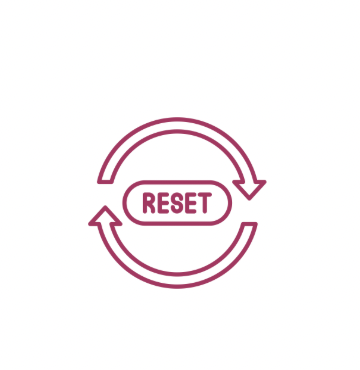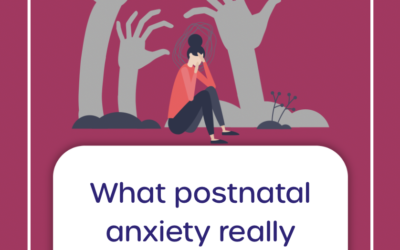Early starts after the clock change? Here is a gentle, evidence-based 3 day sleep reset plan to help your baby or toddler’s body clock rebalance calmly, kindly, and without stress.
The Morning After the Clock Change
The clocks have gone back and if you were greeted by a 5 a.m. start today, you are not alone. Across the UK, thousands of parents are quietly sipping cold coffee and wondering how to convince their baby that it is not morning yet.
Here is the truth: your baby is not misbehaving or regressing. Their body simply has not caught up with the new time. Babies and toddlers run on light cues and hormonal rhythms, not the numbers on a clock.
That is why the key to getting things back on track is not about forcing sleep. It is about gently helping the body clock reset through light, consistency, and calm connection.
You do not need to overhaul everything. It usually takes just three calm, consistent days for your child’s circadian rhythm to rebalance. This blog explains the science behind what is happening and walks you through a simple, connection-first 3-day gentle sleep reset plan that really works.
Why Does the Clock Change Affect Baby Sleep?
When the clocks move, adults can rationalise what is happening. We can tell ourselves it is still dark outside, make another cup of tea, and power through. Babies cannot.
Their bodies are tuned to daylight, not devices. The brain’s master clock (the suprachiasmatic nucleus, or SCN) controls the release of melatonin and cortisol, hormones that regulate sleep and alertness.
When morning light arrives earlier after the clock change, melatonin (the sleepy hormone) switches off sooner and cortisol (the wake-up hormone) rises earlier. For babies and toddlers, this can lead to:
• Early morning wakes between 4:30 and 5:30 a.m.
• Overtiredness by late afternoon
• Nap resistance or short naps
• Evening meltdowns or bedtime battles
These changes are biological, not behavioural. Your child’s system needs time to adjust, just like when we travel to a new time zone.
The Gentle Sleep Reset – Science Meets Sanity
A gentle sleep reset uses environmental cues such as light, timing, and routine to gradually realign your baby’s body clock.
Instead of making big changes that cause tears or confusion, you shift the rhythm by 10–15 minutes a day while protecting the most important anchor points:
• Morning light exposure
• Consistent nap times
• A predictable bedtime routine
This slow, connection-based approach helps your baby’s hormones recalibrate naturally without stress or overwhelm.
Your 3-Day Sleep Reset Plan
The plan works whether you are recovering from the clock change or just need a reset after illness, holidays, or routine disruption.
Day 1 – Re-anchor the Morning and Protect Bedtime
Morning:
• Get up at your target wake time, even if your baby was awake earlier.
• Open curtains straight away because bright light is your biggest ally. Step outside for 10 minutes if you can.
• Offer breakfast within 30 minutes of waking to reinforce daytime in the body clock.
Naps:
• Keep naps roughly at their usual times but cap any nap that creeps too late in the day.
• If your child naps twice, make sure the last nap ends at least two hours before bedtime.
• For toddlers, end the nap by 3:00 p.m. to protect bedtime sleep pressure.
Evening:
• Dim the lights and slow the pace at least an hour before bedtime.
• Move bedtime 10–15 minutes later tonight if you are adjusting for the clock change.
• Use a short, predictable wind-down such as bath, feed, cuddle, story, then bed.
Do not stress if your baby takes a little longer to settle. Their hormones are still catching up.
Day 2 – Hold the Line and Fine-Tune Naps
Morning:
• Wake at the same target time again because this consistency anchors your baby’s circadian rhythm.
• Repeat your bright-light exposure and breakfast routine.
Naps:
• Keep nap timing steady but if bedtime was tricky last night, shorten the afternoon nap by 10–15 minutes.
• Avoid car or pram naps close to evening as they can steal sleep pressure from bedtime.
Afternoon:
• Aim for some outdoor play, daylight, and movement.
• Offer a balanced snack with protein and complex carbs around 3:30 p.m., such as toast fingers with nut butter or yoghurt and fruit.
Evening:
• Begin your wind-down at the same new time as Day 1.
• Keep screens off at least 90 minutes before bedtime as blue light delays melatonin.
• Add one calming sensory step if bedtime felt fraught yesterday, such as a gentle massage, quiet singing, or extra cuddle time.
By the end of Day 2, you will often see bedtime settling more easily and wake-ups creeping later again.
Day 3 – Lock It In
Morning:
• Wake at your usual target time, for most families around 7:00 a.m.
• Go straight to light and breakfast again because these are your strongest anchors.
Naps:
• Maintain nap timing but adjust duration if needed.
• If early waking is still happening, reduce total day sleep by about 15 minutes today.
Evening:
• Keep the same calm, connection-first bedtime routine.
• Bedtime should now be back at your ideal time. Hold this for at least three nights before making further tweaks.
Troubleshooting Early Waking
Even after three days, some children still wake before 6:00 a.m. That is normal as it can take up to a week for the full adjustment to settle.
Try these small tweaks:
• Avoid starting the day before 6:00 a.m. If your child is awake, keep lights low and voice calm until your target wake time.
• Check the environment. Early morning light leaks and noisy boilers can trigger waking. Use blackout blinds and white noise if needed.
• Protect total sleep pressure. If early waking continues, trim naps by 10–15 minutes and hold bedtime steady for three more nights.
Remember that early waking is not fixed by making bedtime later. It is fixed by consistency.
The Power of Calm, Predictable Evenings
Bedtime is often where parents feel most pressure after the clock change, especially when everyone is overtired. But the most powerful sleep cue is not a perfect routine or a dark room. It is you.
Your calm tone, predictable words, and loving presence tell your child’s nervous system that it is safe to rest. Try a simple, repeatable bedtime script like:
“It is sleep time now. Your body knows how to rest. I am close, and you are safe.”
This phrase helps build trust and predictability, which regulate cortisol and promote easier settling.
When to Expect Things to Settle
Most families notice improvement by Day 3 and a full reset by Day 7 to 10.
Remember that developmental leaps, teething, or illness can temporarily disrupt sleep too, but the same principles apply: light, routine, and calm connection.
The beauty of this plan is that it works any time your family needs a gentle reset, not just after the clock change.
Example Age-Appropriate Day Routines
Here are sample outlines to help visualise how your reset days might look.
6–12 months:
• 7:00 a.m. Wake, feed, light
• 9:30–10:15 Nap 1 (45 min)
• 1:00–2:00 Nap 2 (60 min)
• 6:30 Wind-down
• 7:00 Bed
12–24 months:
• 7:00 a.m. Wake
• 12:15–1:45 Nap (90 min)
• 6:30 Calm time
• 7:00 Bed
2–3 years:
• 7:00 a.m. Wake
• 12:30–1:15 Nap (45 min)
• 6:45 Wind-down
• 7:15 Bed
3–5 years:
• 7:00 a.m. Wake
• Quiet rest 1:00–1:20 (no nap)
• 6:30 Wind-down
• 7:00 Bed
Use these as flexible anchors, not rigid schedules. Every child’s rhythm is unique, but predictable patterns provide the stability that supports better sleep.
Gentle Sleep Reset Tools for Parents
You can get started tonight with my evidence-based guide:
💤 Essential Sleep Reset Guide (£5 / free inside The Nest)
A detailed resource that expands the plan with:
• Full daily routines by age
• Troubleshooting for early waking and night wakings
• Printable checklists and tracking sheets
• Guidance for naps, environment, and sensory calm
• Tips for when you are working or have multiple children
These tools are written by a qualified Health Visitor and Gentle Sleep Coach, using real-world strategies that respect attachment and development.
👉 Join The Nest to access the full guide and expert community support
Final Thoughts
If your mornings have started earlier than you would like since the clock change, take a deep breath. This is not a sleep regression and it does not mean you have lost your progress.
Your baby’s body clock just needs gentle guidance, not fixing. Light, rhythm, and connection are all it takes to bring sleep back into balance.
You have got this. 🌤




0 Comments